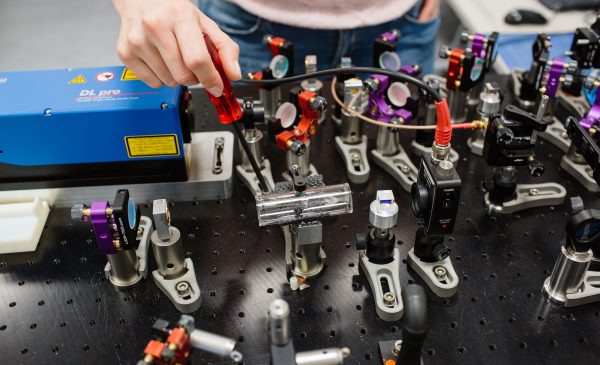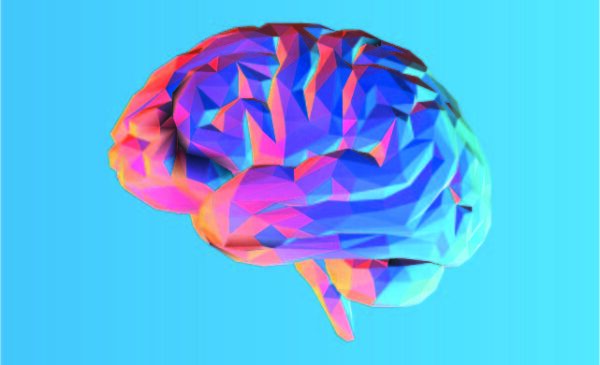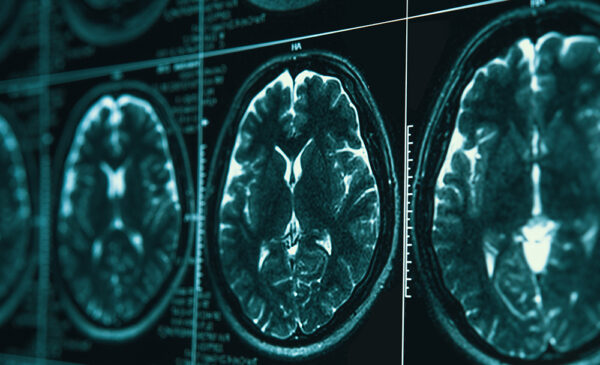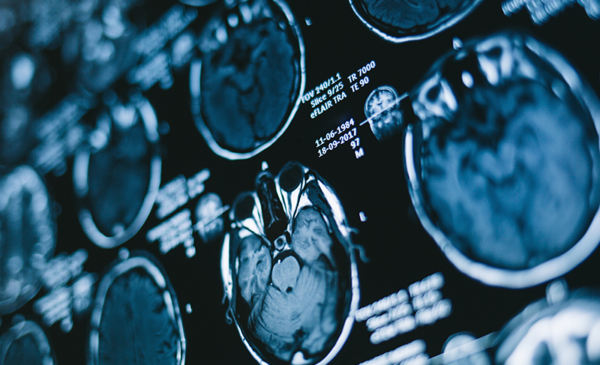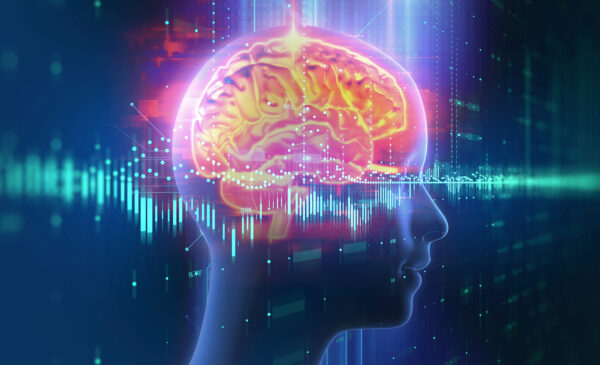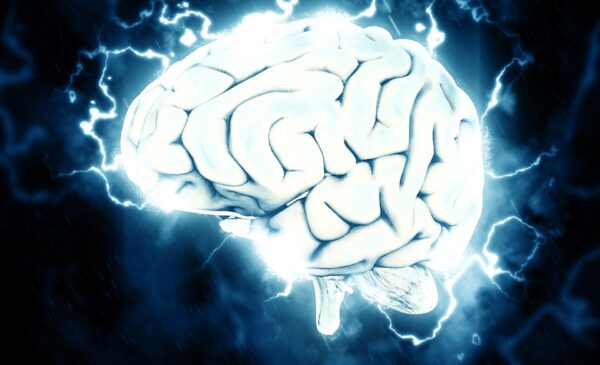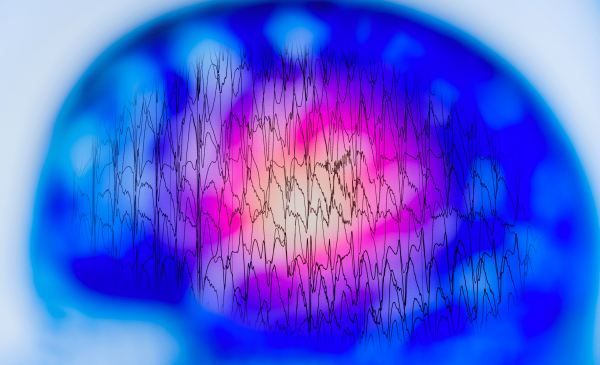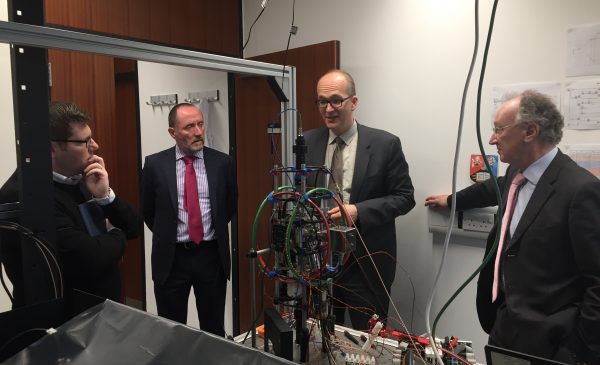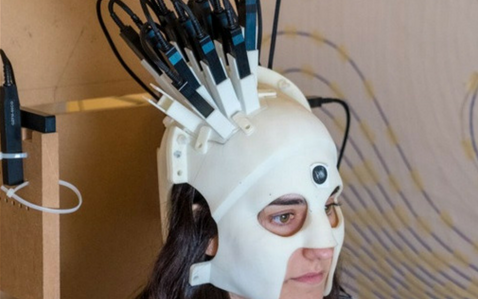Magnetic fields surround us. All electrical currents generate local magnetic fields, which, with the right sensors, can be detected and measured. Increasingly sensitive magnetic field detectors can detect smaller currents, at greater distances.
Quantum technologies enable a dramatic improvement in size, weight, cost and sensitivity of magnetic sensors; indeed previously, the most sensitive magnetic field measurements required devices cooled to liquid helium temperatures, and consequently such devices must be housed in large and expensive cryogenic dewars. However, new quantum enabled devices, which are small (about the size of a lego brick) and lightweight, will expand and enhance the range of applications, offering a step change for established fields, as well as generating new application areas.
A key example of this is non-invasive brain imaging. The brain is the most complex structure in the known universe; it contains roughly 86 billion cells (neurons) transmitting 1000 electrical impulses per second. We are unpacking more of its mysteries each day, but there is a lot left to be learned, such as our understanding of conditions like autism and schizophrenia, and the interaction between anatomy, emotions and behaviour. Therapies for conditions such as Alzheimer’s and Parkinson’s Disease come with heavy side effects or are managerial rather than curative. We struggle to diagnose many conditions; e.g. Alzheimer’s can only be definitively identified on autopsy, as it requires microscopy examination of brain tissue to identify amyloid deposits. The brain’s encasement in the skull is a big obstacle – not being able to physically examine and explore the brain safely in a live patient limits our ability to learn about the brain. Consequently, brain research remains one of the biggest challenges for 21st century science.
Researchers at the UK Quantum Technology Hub Sensors and Timing are beginning to overcome this by applying quantum sensors to human brain imaging. Like all currents, the electrical impulses that are generated by the brain create magnetic fields; these fields are tiny (around one billionth of the earth’s magnetic field) but can be detected, outside the head, using quantum sensors known as Optically Pumped Magnetometers (OPMs) in a process called magnetoencephalography (MEG). The head is transparent to magnetic field, so these measured fields can be used to accurately reconstruct human brain activity completely non-invasively. Researchers have used OPMs to create the first wearable MEG system, comprising 50 OPMs in an optimised 3D-printed Helmet which, for the first time, allows free movement of a subject during scanning. Because the new sensors do not require cryogens, they can be placed closer to the brain, enhancing the accuracy. Moreover, a wearable system, which also adapts to head shape, is beginning to open up MEG to new subject cohorts, in particular children who often find it difficult to cope with conventional brain scanning environments.
Brain imaging is increasingly vital: in young people many illnesses can be diagnosed at an early age but we still do not understand the neural substrates that underlie them, and until now we have lacked the tools to investigate them. At the other end of the spectrum, as proportional mortality from cancer and cardiovascular disease falls and we see an aging population, neurological disorders will become more prevalent (indeed they were the leading cause of disability-adjusted life years (DALYs) by 2015, comprising 10.2%, and the second leading cause of deaths at 16.8%, or 9.4 million). Dementia prevalence is rising; the number of people living with dementia will double every 30 years, reaching 75 million people by 2025 with a marked increase in developing economies. Brain imaging is becoming a vital tool and quantum technology is in the process of revolutionising this important area of healthcare.




